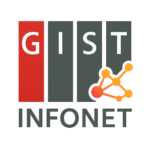February 2013
| No | Date | Title | Speaker | Presentation | Discussion |
| 1 | 2013-02-05 | Compressive multiple view projection incoherent holography | Sangjun Park | (pdf) | |
| In this seminar, the principles of the muliple view projection (MVP) holography technique are described. After understanding the principles, the intuition of the paper is shortly given. Finally, the new technique so called compressive multiple view projection (CMVP) holography is presented and the numberical simulations are also demonstrated. | |||||
| 2 | 2013-02-12 | Compressed Sensing of EEG for Wireless Telemonitoring with Low Energy Consumption and Inexpensive Hardware | Younghak Shin | (pdf) | |
| Compressing EEG for telemonitoring is extremely difficult for current CS algorithms, because EEG is not sparse in the time domain nor sparse in transformed domains. In this study, they proposed to use the framework of block sparse Bayesian learning, which has superior performance to other existing CS algorithms in recovering non-sparse signals. Experimental results showed that it recovered EEG signals with good quality. Thus, it is very promising for wireless telemonitoring based cognitive neuroscience studies and engineering applications. | |||||
| 3 | 2013-02-19 | Compressive sensing in medical ultrasound | Jin-Taek Seong | (pdf) | |
| In this paper, they review the basic theory of compressive sensing. Then, a review of the existing CS studies in the field of medical ultrasound is given: reconstruction of sparse scattering maps, pre-beamforming channel data, post-beamforming signals and slow time Doppler data. | |||||
| 4 | 2013-02-26 | Enhanced performance by a hybrid NIRS-EEG brain computer interface | Seungchan Lee |
(pdf) | |
| In this paper, they investigate whether near-infrared spectroscopy (NIRS) can be used to enhance the EEG approach. In the experiment, they applied both methods simultaneously in a real-time Sensory Motor Rhythm (SMR)-based BCI paradigm, involving executed movements as well as motor imagery. They tested how the classification of NIRS data can complement ongoing real-time EEG classification. From the results, simultaneous measurements of NIRS and EEG can significantly improve the classification accuracy of motor imagery in over 90% of considered subjects and increases performance by 5% on average (pb0:01). | |||||
